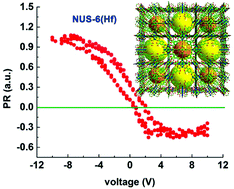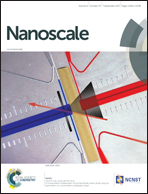Probing nanoscale functionalities of metal–organic framework nanocrystals†
Abstract
Experimental investigation of functional properties of metal–organic frameworks (MOFs) at nanoscale precision is challenging and rarely reported. In this study, we report the piezo- and ferroelectric properties of NUS-6 MOF nanocrystals using dual AC resonance tracking piezoresponse force microscopy and piezoresponse force spectroscopy for the first time. Both NUS-6-(Hf) and NUS-6-(Zr) nanocrystals displayed anomalous piezoelectricity with the calculated piezoelectric coefficient dzz constants of 2.0–3.5 pm V−1 and 1.5–2.5 pm V−1, respectively. Moreover, NUS-6-(Hf) showed much better polarization-switching behaviors (ferroelectricity) than NUS-6-(Zr), featured by very low coercive biases in the ferroelectric hysteresis (PR) loop. Furthermore, elasticity and thermal stability of the NUS-6 nanocrystals have been presented. The results have opened a realm of probing piezo- and ferro-electric properties as well as mechanical properties of MOF nanocrystals, which are promising materials for applications in integrated microelectromechanical systems (MEMS).



 Please wait while we load your content...
Please wait while we load your content...